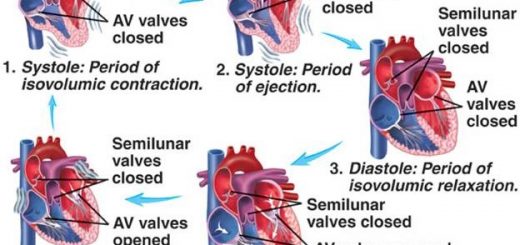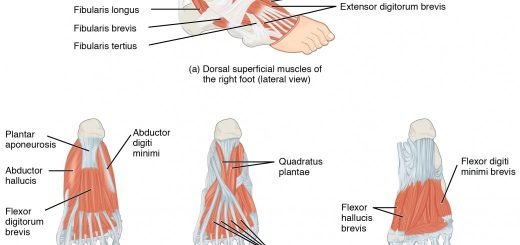Pneumonia causes, types, treatment, Is pneumonia usually serious? and Is pneumonia contagious?
Pneumonia is inflammation of the lower respiratory tract involving the lung‘s airways and supporting structures. Pneumonia can range in seriousness from mild to life-threatening.
Pneumonia
Pneumonia is an infection that inflames the air sacs (alveoli) in one or both lungs, These air sacs may fill with fluid or pus, causing symptoms such as cough, fever, chills, and difficulty breathing, Pneumonia can range in severity from mild to life-threatening and affects people of all ages, especially infants, older adults, and those with weakened immune systems.
There are two major categories of pneumonias:
- Community-acquired pneumonia: pneumonia in a previously healthy person who acquires the infection outside the hospital setting.
- Hospital-acquired pneumonia or ventilator-associated: patients acquired their infection within the hospital setting, at least 2 days i.e. ≥ 48 hours, following admission.
Pathogenesis
Viruses cause primary infections of the respiratory tract, as well as inhibit host defenses (destroy respiratory epithelium and disrupt normal ciliary activity) that, in turn, can predispose patients to a secondary bacterial infection.
Organisms can cause infection of the lung by four possible routes:
A) by upper airway colonization or infection that extends into the lung.
B) by aspiration of organisms (thereby avoiding the upper airway defenses).
Aspiration of oropharyngeal contents is important in the pathogenesis of many types of pneumonia, Aspiration may occur during a loss of consciousness such as during anesthesia or a seizure, or after alcohol or drug abuse, or even in geriatric patients.
C) by inhalation of airborne droplets containing the organism.
D) by seeding the lung via the blood from a distant site of infection.
Aided by gravity and often by loss of some host nonspecific protective mechanisms, organisms reach lung tissue, where they multiply and attract host inflammatory cells, The buildup of cell debris and fluid contributes to the loss of lung function and thus to the pathology.
Regarding the pathogenesis of hospital-associated and ventilator-associated pneumonia, healthcare devices, the environment, and the transfer between the patient and staff or other patients can be sources of pathogens causing pneumonia.
The primary routes for bacterial entry into the lower respiratory tract are:
- A) Aspiration of oropharyngeal organisms.
- B) leakage of secretions containing bacteria around an endotracheal tube.
For these reasons, intubation and mechanical ventilation significantly increase the risk of pneumonia (6- to 21-fold).
Community-Acquired Pneumonia
Epidemiology/Etiologic Agents:
- The etiology of acute pneumonia is strongly affected by age.
- More than 80% of pneumonia in infants and children are caused by viruses. compared to less than 10% to 20% of pneumonia in adults.
CAP may be caused by:
Typical Bacterial causes:
1) Streptococcus pneumoniae:
- It causes the most common type of bacterial pneumonia called pneumococcal pneumonia.
- Pneumococci are fastidious facultative anaerobic alpha hemolytic Gram-positive capsulated diplococci that are sensitive to optochin.
- 91 serotypes of pneumococci are distinguished by differences like the polysaccharide antigen present in their capsules determined by its reaction with type-specific antisera.
- Capsule is an important virulence factor for pneumococci as it inhibits its phagocytosis.
2) Hermophilus influentse type b (Hib)
- The second most common cause of bacterial pneumonia, especially in older adults and immunocompromised individuals.
- H. influenzae is found on the mucous membrane of URT in humans.
- Non-capsulated H. influenzae are normal commensal.
- Capsulated types are much less frequently found and are considered an important cause of meningitis in unvaccinated children and also a cause of upper and lower respiratory tract infections in children and adults.
- H. influenzae is fastidious facultative anaerobic Gram-negative coccobacilli whose capsulated strains may be divided into 6 serological types (a-f) according to the nature of the polysaccharide present in the capsule, type b H. influenzae (Hib) is most commonly encountered in serious infections.
- The antiphagocytic capsule of type “b” (Hib) is the major virulence factor.
3) Staphylococcus aureus
- They are most common in 1. V drug users, older adults, people with a recent influenza virus infection, and individuals with cystic fibrosis.
- S. aureus causes severe necrotizing pneumonia (Refer to ID1).
4) Gram negative bacteria: E coli, Klebsiella spp, Pseudomonas etc. (Refer to ID1).
5) Mycobacterium Tuberculosis (Refer to ID2).
Atypical Bacterial causes
Some types of bacteria cause what is known as “atypical” bacterial pneumonia”.
It is caused by atypical organisms that are not detectable on Gram stain, cannot be cultured using standard methods, appear different on a chest X-ray, slightly different symptoms, or respond to different antibiotics than the typical bacteria that cause pneumonia
Even though these infections are called “atypical,” they are not uncommon, including:
1) Mycoplasma pneumoniae
- Mycoplasmas are the smallest bacteria that can be free.
- They lack a rigid cell wall and instead are bounded by a triple-layered membrane, that contains sterol, Therefore, they are completely resistant to penicillins but they are inhibited by tetracycline for erythromycin.
- M. pneumoniae is the (most common cause of primary atypical pneumonia, the illness is often mild enough to go undetected and is sometimes referred to as walking pneumonia.
- The highest incidence of disease occurs in older children and young adults (age 5-20).
2) Chlamydophila pneumoniae
- Chlamydiae are obligate intracellular bacteria due to a deficiency in energy-producing metabolic pathways (energy-dependent parasites).
- They are not affected by β-lactam antibiotics because of the absence of a peptidoglycan layer in their cell wall.
3) Legionella pneumophila
- Which causes a dangerous form of pneumonia called Legionnaire’s disease.
- Legionellae are fastidious aerobic Gram-negative short rods.
- Unlike other bacterial pneumonia, Legionella is not passed from person to person.
- Outbreaks of the disease have been linked to exposure to aerosol of contaminated water from air-conditioning ducts; warm-water plumbing systems; humidifiers; and technical medical equipment in hospitals.
• Atypical bacterial pneumonia generally is characterized by a symptom complex that includes headache, low-grade fever, cough, and malaise.
Constitutional symptoms often predominate over respiratory findings.
Although in most cases presentation can be in the milder spectrum of community-acquired pneumonia, some cases, especially if caused by L. pneumophila, may present as severe pneumonia, necessitating intensive care unit admission.
Viral causes
- Viruses that infect the upper respiratory tract may also cause pneumonia.
- Most viral pneumonia are not serious and last a shorter time than bacterial.
- Viral pneumonia may be complicated by a secondary invasion of bacteria, with all the typical symptoms of bacterial pneumonia.
1) Influenza virus (orthomyxovirus)
It is the most common cause of viral pneumonia in adults. (Refer to ID2).
2) Paramyxoviruses
- Including; parainfluenza viruses (1-4), respiratory syncytial virus (RSV), human metapneumovirus, measles, and mumps.
- All members of the Paramyxoviridae family initiate infection via the respiratory tract.
- Replication is limited to respiratory epithelia in parainfluenza and RSV, whereas measles and mumps become disseminated throughout the body and produce generalized disease.
- The Paramyxoviruses are large enveloped, ss non-segmented RNA viruses.
A) Respiratory syncytial virus (RSV)
- It is the most common cause of viral pneumonia in young children.
- Possible involvement of the immune response in the pathogenesis of some RSV respiratory symptoms especially bronchiolitis has been suggested.
B) Parainfluenza viruses (PIV)
Ubiquitous Paramyxoviruses & cause common respiratory illnesses of varying severity in all age groups.
Primary infections in young children usually result in URT infections e.g. rhinitis and pharyngitis.
Severe infections occur with (parainfluenza types 1-3 as:
- a) Laryngeotracheobronchitis (croup): Characterized by respiratory obstruction caused by swelling of the larynx and upper trachea, occurs in children between ages 6-18 months.
- b) Bronchiolitis & pneumonia: A severe illness that occurs mainly in infants under the age of 6 months.
c) Human metapneumovirus (MPV)
- It is a ubiquitous respiratory pathogen.
- Human metapneumovirus can cause a wide range of respiratory illnesses from mild URI to severe LRT disease in all age groups.
3) Adenoviruses
- They are ds-DNA viruses.
- 50 human serotypes are known and responsible for pharyngitis and Pharyngoconjunctival fever.
- Serotypes 3,4 and 7 have caused outbreaks of Pneumonia.
4) Corona viruses
➤ SARS-CoV, MERS-CoV and SARS-CoV-2 (COVID-19) (Refer to ID2).
Fungal causes
Fungal pneumonia is most common in people with chronic health problems or weakened immune systems, and in people who are exposed to large doses of certain fungi from contaminated soil or bird droppings.
1) Pneumocystis jirovecii:
- Pneumocystis pneumonia is a serious fungal infection.
- It occurs in people who have weak immune systems due to HIV/AIDS or the long-term use of medicines that suppress their immune systems, such as those used to treat cancer or manage organ transplants.
2) Cryptococcus neoformans
- Cryptococcosis is an acute, subacute, or chronic pulmonary, systemic, or meningeal mycosis.
- Involvement of the CNS occurs most frequently followed by lung involvement especially among patients with human immunodeficiency virus (HIV) infection and AIDS.
- This fungus is found in bird droppings and soil contaminated with bird droppings.
3) Aspergillus spp. (Refer to ID1)
4) Candida spp. (Refer to ID1)
You can subscribe to Science Online on YouTube from this link: Science Online
You can download Science Online application on Google Play from this link: Science Online Apps on Google Play
Chronic Obstructive Pulmonary Diseases Treatment, Types and Causes of COPD
Steps of Asthma control, What is good control of asthma? and What is asthma management?
Spirometry uses, What is a normal spirometry level? and What is FEV1 in spirometry?
Lung structure, borders, Lobes, Fissures, and Broncho-pulmonary segments
Larynx structure, function, cartilage, muscles, blood supply, and vocal folds
Anatomy of the nose, function of para-nasal air sinuses, and Sphenopalatine Ganglion branches
Thoracic vertebrae structure, function, Chest wall muscles, and Intercostal arteries
Diaphragm anatomy, structure, function, Phrenic nerves, and Nerves of the thorax




